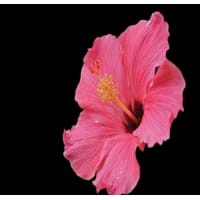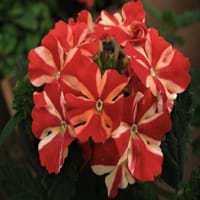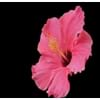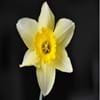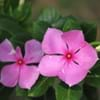Color
Orange, Pink, Purple, Red, White, Yellow
Blue, Pink, Red, White
Color Meaning
Orange - Satisfaction and Passion, Pink - Sensitivity and Love, Purple - Elegance and Pride, Red - Courage, Desire and Love, White - Purity and Innocence, Yellow - Happiness and Friendship
Blue - Peace and Serenity, Pink - Sensitivity and Love, Red - Courage, Desire and Love, White - Purity and Innocence
Line
Not Available
Not Available
Silhouette
Not Available
Not Available
Blossom Texture
Not Available
Not Available
Form
Not Available
Not Available
Sunlight
Full Sun, Part Sun
Full Sun
Watering
Diligently
Diligently
Type of Soil
Well-drained, Loamy
Clay, Sandy
Essential Fertilizers
Boron, Calcium, Chlorine, Copper, Magnesium, Manganese, Nitrogen, Phosphorus, Potassium, Sulphur, Zinc
Lime stone
Common Pests and Diseases
List of Pests
Aphids, Mealybugs, Mites, Scale, Whiteflies
Aphids, Spider Mites, Thrips, Whiteflies
List of Diseases
NA
Bacterial leaf spot or blast, Crown gall rot, Powdery Mildew, Root Rot
Bloom Time
All year
All Summer Season, Fall Season
Origin
China, Pacific Islands
America, Europe
Interesting Facts of
- In China Hibiscus is also called as shoe flower as they use it to polish their shoes.
- Hawaiian and Tahitian wear this flower behind the right flower to announce that they are single and ready to marry,while married women wear it in left ear.
- The Verbena leaves often have light to heavy covering of hair.
- The verbena fruit splits into four, each containing one seed.
Lifespan
Perennials - a plant that lives for three or more years
Annuals - complete its full life cycle in one growing season, Perennials - a plant that lives for three or more years
Habit
Shrubs, Trees
Shrubs
Uses
Not Available
Not Available
Health Benefits
Best remedy for Cough & Cold, improves the functioning of the lungs, kidneys, and stomach, Regulates the Menstruation cycle
Best remedy for Cough & Cold, Cures Constipation, Good for liver and gallbladder, Good remedy for Diarrhea, Reduces Hemorrhoids, Regulates the Menstruation cycle, Used for sinus pain, hay fever and headache
Medicinal Uses
Acts as an antioxidant, It is Antibacterial, prevents dryness and flaky skin
Acts as a antidepressant, Acts as a antispasmodic, Acts as an antioxidant, Enhances Digestion, It has anti-bacterial and anti-fungal properties
Culinary Uses
Used in teas
Used as flavor food in deserts and ice creams, Used in salads, soups and sandwiches
Cosmetic Uses
Good for Hair growth, Prevents pre- mature graying, Used in Perfumes, Used in shampoos and soaps
Best for Dry sensitive skin, Used in Perfumes, Utilized in making essential oils
Occasional Uses
Valentine's Day
Decoration
Scientific Name
Hibiscus Rosa-Sinensis
Verbena officinalis
Sub kingdom
Tracheobionta
Tracheobionta
Super Division
Spermatophyte
Spermatophyte
Division
Magnoliophyta
Magnoliophyta
Class
Magnoliopsida
Magnoliopsida
Family
Malvaceae
Verbenaceae
Genus
Not Available
Not Available
Number of Species
Not Available
Not Available
More about Hibiscus and Verbena Facts and color
You must be curious to know more about Hibiscus and Verbena facts and color. flowers.comparespecies.com will let you know all the Interesting Facts about Hibiscus and Verbena. Hibiscus comes in Orange, Pink, Purple, Red, White, Yellow colors whereas Verbena flowers are with Blue, Pink, Red, White colors. Other Hibiscus and Verbena facts will definitely amuse you.
Hibiscus and Verbena growing conditions
Absolute growing condition is the only key to keep plants in good health and in good shape. Let’s learn about essential Hibiscus and Verbena growing conditions. Hibiscus requires Full Sun, Part Sun and Diligently watering with 6.00 of Well-drained, Loamy soil. Verbena needs Full Sun and Diligently watering with 5.80 of Clay, Sandy soil. Get other Hibiscus and Verbena facts in the sections below.
Hibiscus and Verbena Facts
Want to know about Hibiscus and Verbena facts? Get all the Hibiscus and Verbena facts here.
Hibiscus and Verbena Classification
After knowing about various Hibiscus and Verbena facts, let's study their classification. Based on genetic and physical features, Hibiscus and Verbena classification starts with knowing their scientific name. The scientific name of Hibiscus and Verbena is Hibiscus Rosa-Sinensis and Verbena officinalis respectively. Hibiscus belongs to Malvaceae family whereas Verbena falls under Verbenaceae family. Also check out Flowers by Color so as to plant colorful aroma in the garden.
